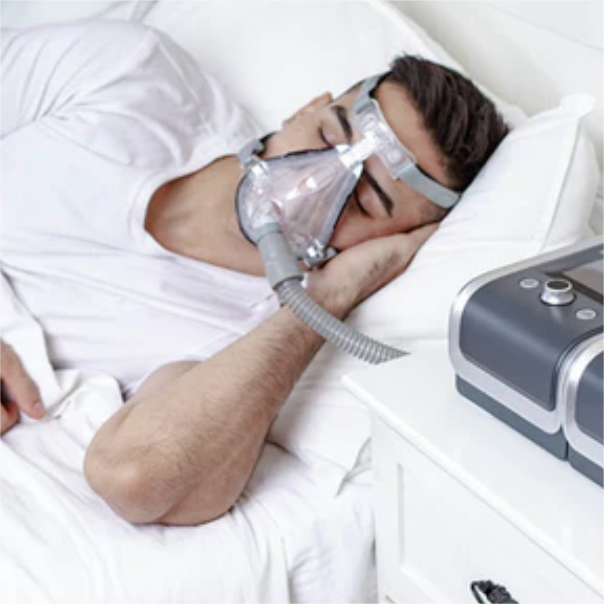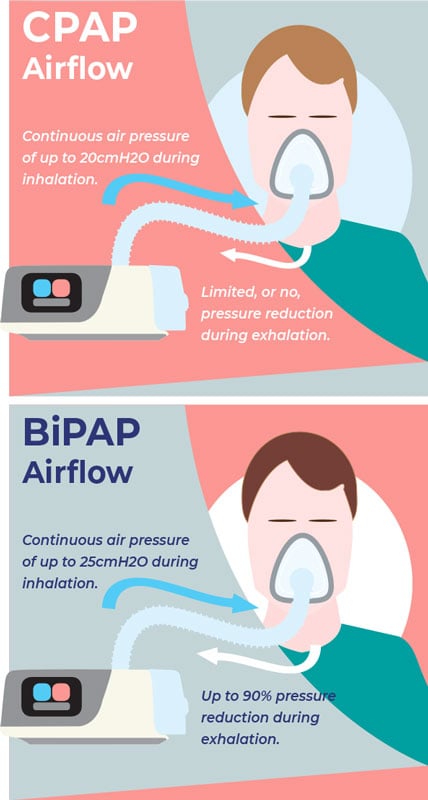Your Guide to Cost Effective BiPAP Rental in Your Area
Your Guide to Cost Effective BiPAP Rental in Your Area
Blog Article
Bipap vs. CPAP: Which Is the Finest for Your Sleep Condition?
When navigating the complexities of rest disorders, the selection in between BiPAP and CPAP therapy is a vital consideration. While CPAP gives a consistent airflow ideal for obstructive sleep apnea, BiPAP's dual stress settings might enhance convenience for those with more detailed respiratory problems.
Understanding Rest Disorders
Sleep problems encompass a series of problems that disrupt regular sleep patterns, influencing both the quality and period of rest. These problems can materialize in numerous kinds, including sleep problems, sleep apnea, narcolepsy, troubled leg syndrome, and parasomnias. Each problem presents special challenges, commonly leading to substantial daytime tiredness, cognitive impairment, and emotional disruptions.
Sleep problems is defined by trouble falling or staying asleep, while rest apnea includes duplicated disruptions in breathing throughout rest, commonly leading to fragmented rest. Narcolepsy, on the other hand, is noted by too much daytime sleepiness and unexpected rest strikes. Restless leg disorder triggers uneasy experiences in the legs, prompting an irrepressible impulse to move them, which can likewise impede the capacity to sleep.
The impact of sleep conditions expands past individual health, influencing total performance, relationships, and quality of life. Comprehending the particular nature of each condition is vital for reliable medical diagnosis and therapy. As sleep health becomes progressively acknowledged as a crucial part of total health, addressing these disorders is essential for enhancing both sleep quality and everyday functioning.
Exactly How CPAP Functions
Constant Favorable Respiratory Tract Stress (CPAP) treatment is often utilized as a main treatment for obstructive sleep apnea (OSA) The mechanism of CPAP involves the use of a maker that provides a stable stream of air with a mask put on throughout sleep. This air flow maintains favorable stress in the air passage, avoiding the collapse or blockage of the throat that can take place during sleep.
When a person takes a breath in, the CPAP maker offers a continuous circulation of air, making sure that the air passage remains open - BiPAP Rental. This not just eases the signs of OSA, such as snoring and disrupted rest patterns, however additionally minimizes the involved health threats, including cardiovascular difficulties and daytime tiredness
The pressure settings on a CPAP equipment can be customized to satisfy private client needs, frequently identified through a sleep study. Overall, CPAP therapy has been revealed to dramatically improve the high quality of rest and general wellness for people suffering from obstructive sleep apnea.
Exactly How BiPAP Works
BiPAP, or Bilevel Favorable Respiratory Tract Stress, is a customized kind of non-invasive air flow that is specifically advantageous for individuals with problems such as complicated rest apnea or breathing problems. Unlike CPAP, which supplies a continual stream of air at a solitary stress, BiPAP gives 2 distinctive stress setups: a greater inspiratory stress for inhalation and a lower expiratory pressure for exhalation. This dual-pressure method permits simpler breathing, minimizing the effort needed during exhalation.
The device operates via a mask fitted over the nose or mouth, attached to an equipment that creates air stress. When the individual inhales, the device delivers the greater stress to help with air flow, guaranteeing that the airway remains open. Upon exhalation, the equipment instantly minimizes the pressure, making it more comfy for the individual to breathe out.

Secret Distinctions In Between BiPAP and CPAP

In contrast, BiPAP (Bilevel Favorable Airway Pressure) supplies two different stress settings: one for inhalation and a reduced one for exhalation. This twin pressure system permits even more comfy breathing, particularly for individuals that struggle with exhaling against a constant stress. BiPAP is frequently suggested for people with complex sleep apnea, chronic obstructive lung condition (COPD), or those who require extra assistance during rest.
Moreover, the complexity of BiPAP devices usually leads to a greater price and calls for extra careful titration than CPAP. BiPAP Rental. Understanding these essential differences can help in acknowledging which gadget may be a lot more appropriate for certain rest conditions, establishing the groundwork for educated treatment decisions
Choosing the Right Therapy
The choice between BiPAP and CPAP treatment largely hinges on the details qualities Discover More Here of the rest problem, the person's total health and wellness, and their comfort with the tool. CPAP, which provides a continuous stream of air, is commonly recommended for obstructive sleep apnea (OSA)
Alternatively, BiPAP supplies two degrees of pressure: one for breathing and a reduced one for exhalation. This double pressure system is valuable for individuals with complex rest apnea or those who experience problem exhaling versus a continuous stress. Additionally, BiPAP is commonly recommended for people with respiratory problems, such as persistent obstructive pulmonary condition (COPD), where varying stress setups can improve convenience and compliance.
Eventually, an extensive evaluation by a you could try here sleep professional, including a rest research, can help figure out which therapy lines up ideal with the patient's visit our website requirements. Variables such as comfort, simplicity of usage, and specific medical problems should likewise be taken into account to optimize treatment end results.
Conclusion
In summary, both BiPAP and CPAP serve unique functions in the monitoring of rest problems. CPAP is effective for obstructive sleep apnea through regular air flow, while BiPAP uses double stress setups that improve convenience for those with complicated sleep apnea or breathing problems. The option between these therapies ought to be directed by private requirements and conditions, necessitating an extensive analysis by a rest professional to make certain optimum therapy results and improved quality of rest.

Generally, CPAP treatment has been shown to substantially boost the quality of sleep and general health and wellness for people enduring from obstructive sleep apnea.
BiPAP is typically suggested for people with complex sleep apnea, chronic obstructive pulmonary illness (COPD), or those that call for added assistance during sleep.
CPAP is efficient for obstructive sleep apnea with regular air movement, while BiPAP supplies dual pressure setups that enhance comfort for those with complex rest apnea or respiratory system concerns.
Report this page